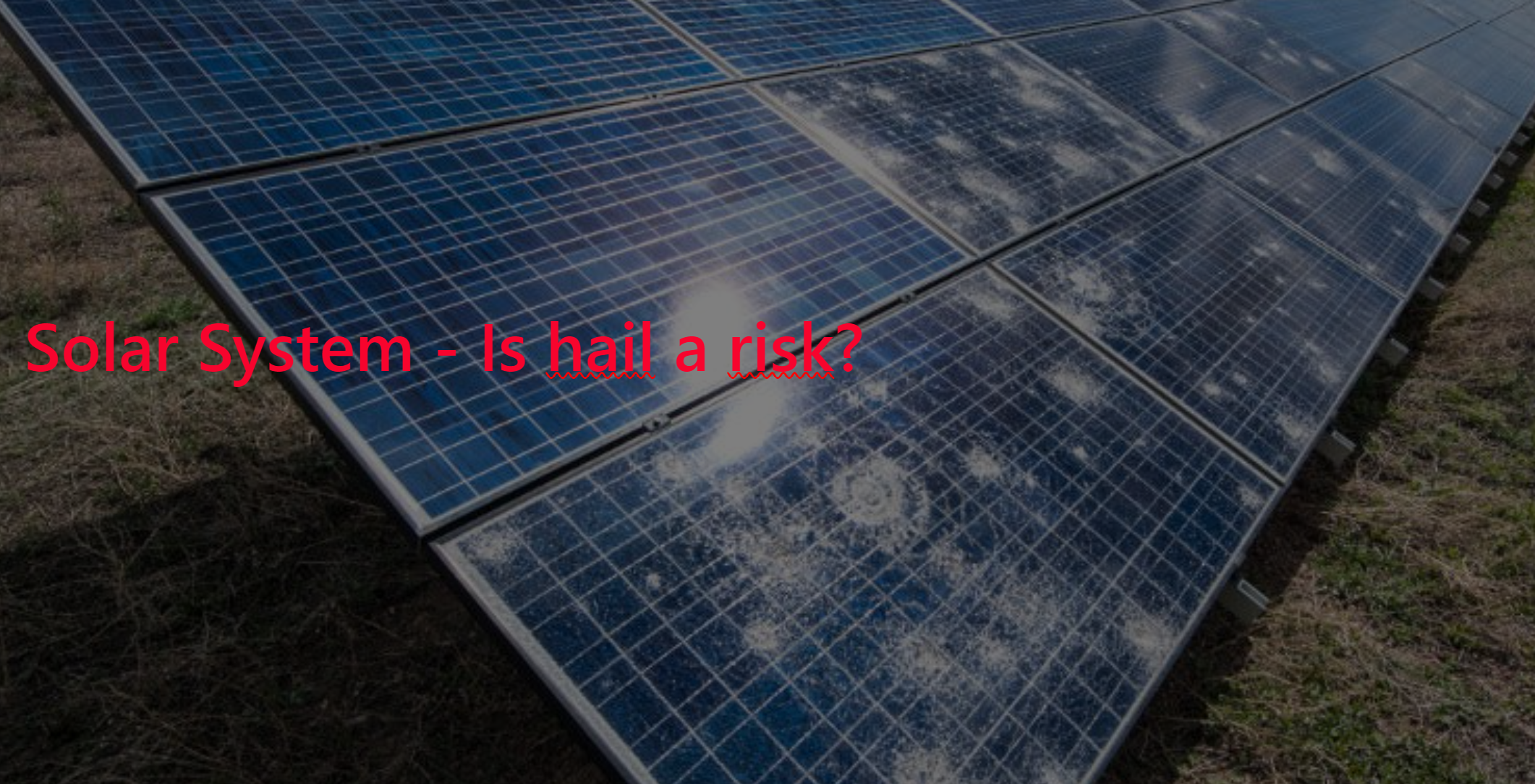
Solar System – Is hail a risk?
In March 2017, a massive hailstorm devastated the town of Lakewood, Colorado. Hailstones up to seven centimeters in diameter damaged cars, broke windows, and caused extensive damage to people and animals. Due to the severe damage, the Colorado Mills shopping mall had to close for a whole year.
A few kilometers from the damaged buildings, a photovoltaic power plant at the National Renewable Energy Laboratory (NREL) was being tested by hail of similar size. Only one of the 3,168 photovoltaic panels was damaged. After the storm passed, work continued unimpeded.
High-quality PV panels can provide power for many years and can withstand high summer temperatures, freezing winter temperatures, strong winds, and, as you can see, large hail.
But here goes? Is hail really a danger? What damage can it cause and how can you prepare for it? How to identify hail-proof solar panels?

Solar System – Is hail a risk?
Solar System – Is hail a risk?
The frequency of hail varies from place to place. In some places, it happens quite frequently, while in others, sometimes even nearby, it is rare. You can use the map below to estimate the extent of the hail risk.
Therefore, if your house is located in a yellow, orange or red zone, you should probably invest in mechanically stronger PV panels. On the other hand, if you live in a blue zone, you don’t have to worry. While bad luck is always a possibility, the chances of hail damage are very low.
Secondly, hailstones come in different sizes and have different strengths. Although absolutely no photovoltaic panel in the world could survive a truly record-breaking hailstone (hailstones with a diameter of 15 cm were found in 1970), most hailstones do not pose a serious threat.

TÜV Rheinland Photovoltaic Power Plant Case Study
TÜV Rheinland Photovoltaic Power Plant Case Study
The report, “ On-site PV Module Failure Assessment ” – compiled by TÜV Rheinland – based on data collected from ground-mounted PV installations, states: “Lightning, thunderstorms and hail only cause a 10% drop in performance and appear to reduce the overall performance of the installation by less than 1%”.
Interestingly, however, even if the glass remains intact, the solar cell may develop microcracks during impact, which can lead to bullet holes. However, their occurrence depends on several other factors, including the quality of the EVA film.
Anti-hail capability of photovoltaic modules
It is important for you as a customer to understand which panels are protected against hail. In addition, the manufacturer’s claims should be confirmed by external companies. For this purpose, a number of certificates have been developed to determine the minimum hail resistance.
The most important certificate is the international IEC 61215. Panels with this certificate can withstand 23 mm hail falling at a speed of 25 m/s, which is equivalent to hail resistance level 2 (out of the 5 level used mainly in Western countries).
All solar panels sold in Germany and the EU must have this certificate, which means that all solar panels are resistant to hail – at least to a certain extent.
Some manufacturers claim to have higher hail resistance. For example, Selfa claims in its panel datasheet that it can withstand hail balls with a diameter of 33.9mm at a speed of 55m/s. On the other hand, Tesla photovoltaic roof tiles are said to have level 4 hail resistance.
Hail resistance is also related to snow load capacity or mechanical resistance to frontal pressure. PV modules that excel in this respect are manufactured by LG, Panasonic, SunPower, REC, Selfa and Solarwatt.
Obviously, hail larger than the certification assumptions could cause damage.
So how do you protect yourself from it?
Hail Insurance
The best financial protection for solar system owners is PV system insurance, which covers the cost of repairing damaged components. It is important to read the policy terms, as not all policies protect against hail.
Homeowners who install on their rooftop can easily include the installation in their entire building’s insurance. This is the most cost-effective solution.
While PV panels should work fine for many years without any problems, why not protect yourself completely? Insurance shouldn’t be expensive, especially if you buy high-quality panels.
Does the manufacturer’s warranty protect against the effects of hail?
Generally no. The manufacturer’s warranty does not cover damage caused by force majeure. Here is an example of a warranty:
[Damage caused by] natural disasters or acts of God, including but not limited to lightning, hail, frost, snow, storms, sea waves, floods, extremely high temperatures, earthquakes, typhoons, tornadoes, volcanic eruptions, meteorite impacts, soil cracks or landslides [not included] – Q Cells warranty terms.

1 thought on “Does hail really pose a threat to photovoltaic power generation?”